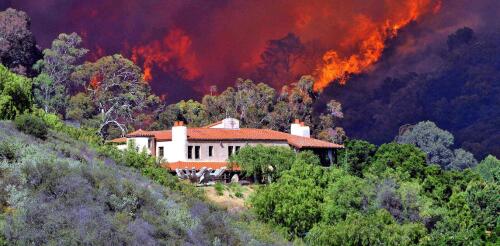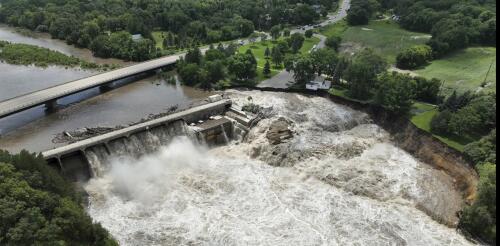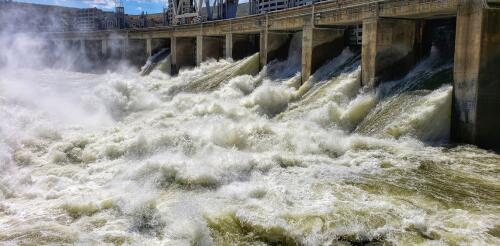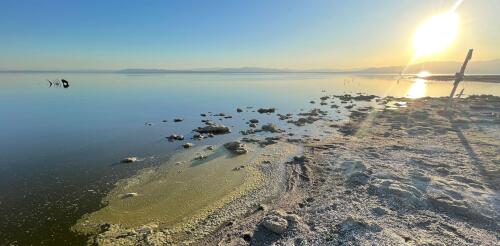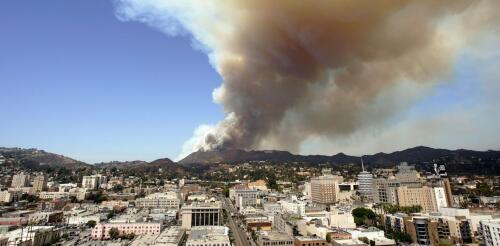California
Humans have learned to fear wildfire. It can destroy communities, torch pristine forests and choke even faraway cities with toxic smoke. Wildfire is scary for good reason, and over a century of fire suppression efforts has conditioned people to expect wildland firefighters to snuff it out. But as journalist Nick Mott and I explore our new book, “This Is Wildfire: How to Protect Your Home, Yourself, and Your Community in the Age of Heat,” and in our podcast “Fireline,” this expectation and the approach to wildfire will have to change. Over time, extensive fire suppression has set the stage for the increasingly destructive wildfires we see today. The problem with fighting every fire The way the U.S. deals with wildfires today dates back to around 1910, when the Great Burn torched some 3 million acres across Washington, Idaho, Montana and British Columbia. After watching the fire’s swift and unstoppable spread, the fledgling Forest Service developed...
Heavy rainfall generated widespread flooding. in the Upper Midwest in late June 2024, putting at least one aging dam at risk. In southern Minnesota, the Blue Earth River cut a path around the Rapidan Dam in Rapidan Township, about 15 miles south of Mankato, on June 24, putting the structure at imminent risk of failing. Officials warned local residents that if the dam burst, the river could rise by 2 feet, but said that evacuations were not needed. This event comes a year after flooding in Vermont collapsed at least one dam and threatened others. Hiba Baroud, associate professor and associate chair in the department of civil and environmental engineering at Vanderbilt University, explains how flooding stresses dams in a changing climate. How serious is the risk when water flows over or around a dam? These conditions can result in erosion, which subsequently could lead to a dam breach or failure and a sudden, uncontrolled release of impounded water. The risk reflects the combin...
As rising global temperatures make extreme storms more common, the nation’s dams and reservoirs – crucial to keeping communities dry – are being tested. Storms in the U.S. Northeast stretched the region’s flood control systems nearly to the breaking point in July 2023. California and states along the Mississippi River faced similar flood control challenges in 2023. Managing these flood control systems is a careful balancing act. Do managers release water to make room for the storm’s runoff, increasing the risk of flooding downstream, or hold as much as possible to protect downstream farms and communities, which could increase the chance of larger floods if another storm comes through? The earlier decisions can be made, the better the chance of avoiding downstream damage. But forecasts aren’t always reliable, and waiting for the rain to fall may mean acting too late. Satellite water vapor imagery from July 9-11, 20...
Imperial County consistently ranks among the most economically distressed places in California. Its Salton Sea, the state’s biggest and most toxic lake, is an environmental disaster. And the region’s politics have been dominated by a conservative white elite, despite its supermajority Latino population. The county also happens to be sitting on enough lithium to produce nearly 400 million batteries, sufficient to completely revamp the American auto fleet to electric propulsion. Even better, that lithium could be extracted in a way consistent with broader goals to reduce pollution. The traditional ways to extract lithium involve either hard rock mining, which generates lots of waste, or large evaporation ponds, which waste a lot of water. In Imperial Valley, companies are pioneering a third method. They are extracting the mineral from the underground briny water brought up during geothermal energy production and then injecting that briny water back into the ground in a...
Over the past two decades, a staggering 21.8 million Americans found themselves living within 3 miles (5 kilometers) of a large wildfire. Most of those residents would have had to evacuate, and many would have been exposed to smoke and emotional trauma from the fire. Nearly 600,000 of them were directly exposed to the fire, with their homes inside the wildfire perimeter. Those statistics reflect how the number of people directly exposed to wildfires more than doubled from 2000 to 2019, my team’s new research shows. But while commentators often blame the rising risk on homebuilders pushing deeper into the wildland areas, we found that the population growth in these high-risk areas explained only a small part of the increase in the number of people who were exposed to wildfires. Instead, three-quarters of this trend was driven by intense fires growing out of control and encroaching on existing communities. A wildfire in 2017 dest...
